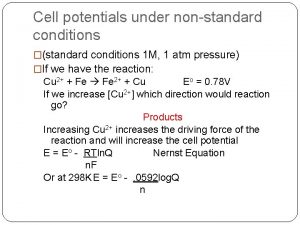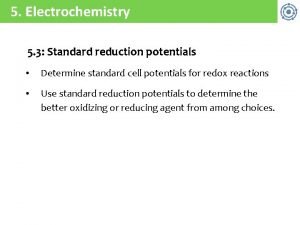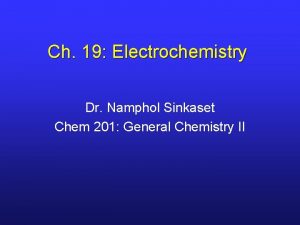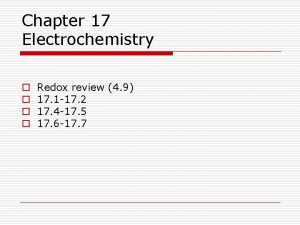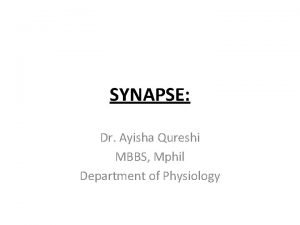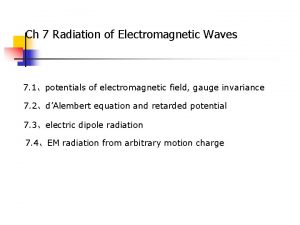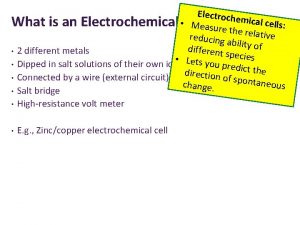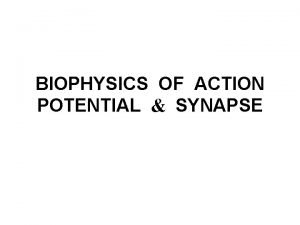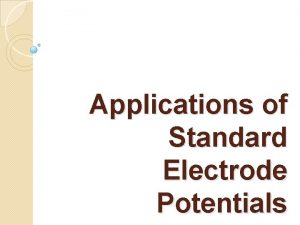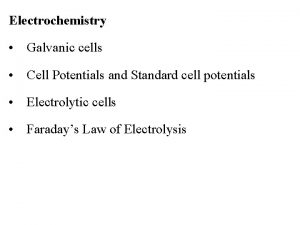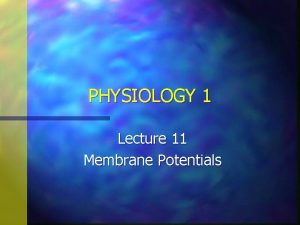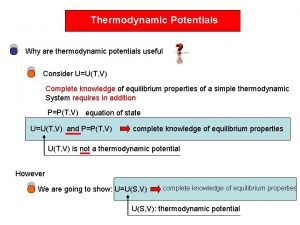Cell potentials under nonstandard conditions standard conditions 1













- Slides: 13

Cell potentials under non-standard conditions �(standard conditions 1 M, 1 atm pressure) �If we have the reaction: Cu 2+ + Fe 2+ + Cu Eo = 0. 78 V If we increase [Cu 2+] which direction would reaction go? Products Increasing Cu 2+ increases the driving force of the reaction and will increase the cell potential E = Eo - RTln. Q Nernst Equation n. F Or at 298 K E = Eo -. 0592 log. Q n

Example Calculate Ecell for the cell diagrammed below: Cu Cu 2+ (0. 50 M) Fe 3+ (0. 20 M), Fe 2+ (0. 10 M) Pt

Ag Ag+ (0. 0010 M) Ag+ (0. 010 M) Ag Calculate the cell potential of the concentration cell above.

A lead battery like that used in cars operates under non-standard conditions. Calculate the potential for the battery when the concentration of H 2 SO 4 is 6. 00 M at 25 o. C. Pb (s) + Pb. O 2 (s) + H 2 SO 4 2 Pb. SO 4 (s) + 2 H 2 O

Batteries Ideal battery should be 1) Inexpensive 2) Portable 3) Environmentally benign when discarded 4) Have long life (maintain its potential for a long period of time)

Types of Batteries Dry Cell Strengths: low cost made of non-toxic materials Weaknesses difficult to recycle prone to leaking short shelf life unstable potential and current

Types of Batteries Alkaline Cell Similar to dry cell but uses basic electrolyte so it does not react with Zn when not in use Cannot be recycled Longer shelf life than dry cell More $ than dry cell

Types of Batteries Ag Cell �Cathode is made of Ag 2 O � 1. 6 V �Can be very small �Great reliability over long periods of time �Good for pacemakers, hearing aids, cameras

Types of Batteries Rechargeable Batteries � An external source of electricity reverses the spontaneous cell reaction, after charging the species they revert to the original concentrations allowing the battery to give off electricity again � Car batteries, Ni. Cd (laptops, cell phones), Ni. MH (hybrid cars) batteries Li (cell phones, laptops) Strengths: inexpensive, high power density, long shelf life, have 1/32 the impact on environment vs. nonrechargeable Weaknesses: may release toxic metals to environment, some can generate H 2 @ cathode making them potentially explosive

Fuel Cells Not batteries, fuel must be continually supplied

Electrolysis �Recall Galvanic cells: change chemical energy into electrical energy Electrolytic cells: change electrical energy into chemical energy Electrolytic cells can be used to recharge batteries, plate chrome, make Al Because electrolytic cells require electrical energy, it is possible to figure out exactly how much electricity Quantity of Current Moles amount Moles Grams it takes to produce a given of metal charge and time of eof metal electroanalytically with stoichiometry in C

Electrolysis example �What current is required to produce 4. 0 g of chromium metal from Cr(IV)oxide in 24 hours? Current = amps = C/sec

2 nd electrolysis example Ultra-pure Cu and Ag can be made by electrolyzing a solution of Cu. Cl 2 and Ag. Cl. Which metal is cheaper to produce this way? Cu. Cl 2 costs $27. 80/ 250 grams Ag. Cl 2 costs $79. 10/ 250 grams
 How to find cell potential under nonstandard conditions
How to find cell potential under nonstandard conditions Cathode anode standard reduction potential
Cathode anode standard reduction potential Standard english
Standard english Use the tabulated half-cell potentials to calculate
Use the tabulated half-cell potentials to calculate Table of standard reduction potentials
Table of standard reduction potentials Subliminal fringe
Subliminal fringe Source of bioelectric potential
Source of bioelectric potential Graded potentials
Graded potentials Characteristics of graded potential
Characteristics of graded potential Postsynaptic potentials
Postsynaptic potentials Lienard-wiechert potentials
Lienard-wiechert potentials Eθcell
Eθcell Summation of postsynaptic potentials
Summation of postsynaptic potentials U=ts-pv
U=ts-pv
